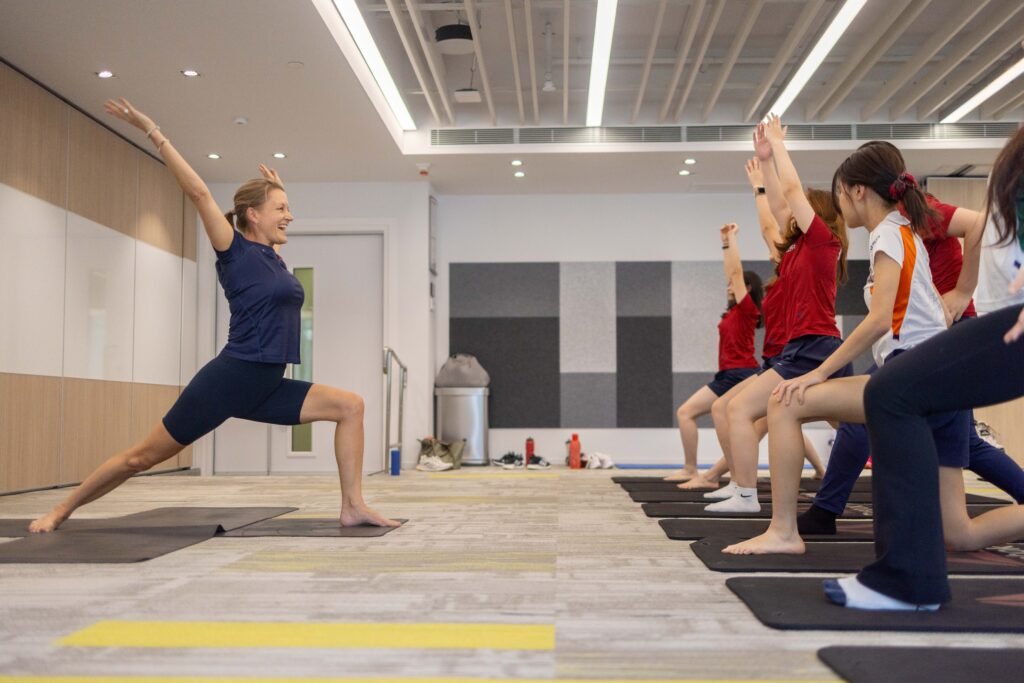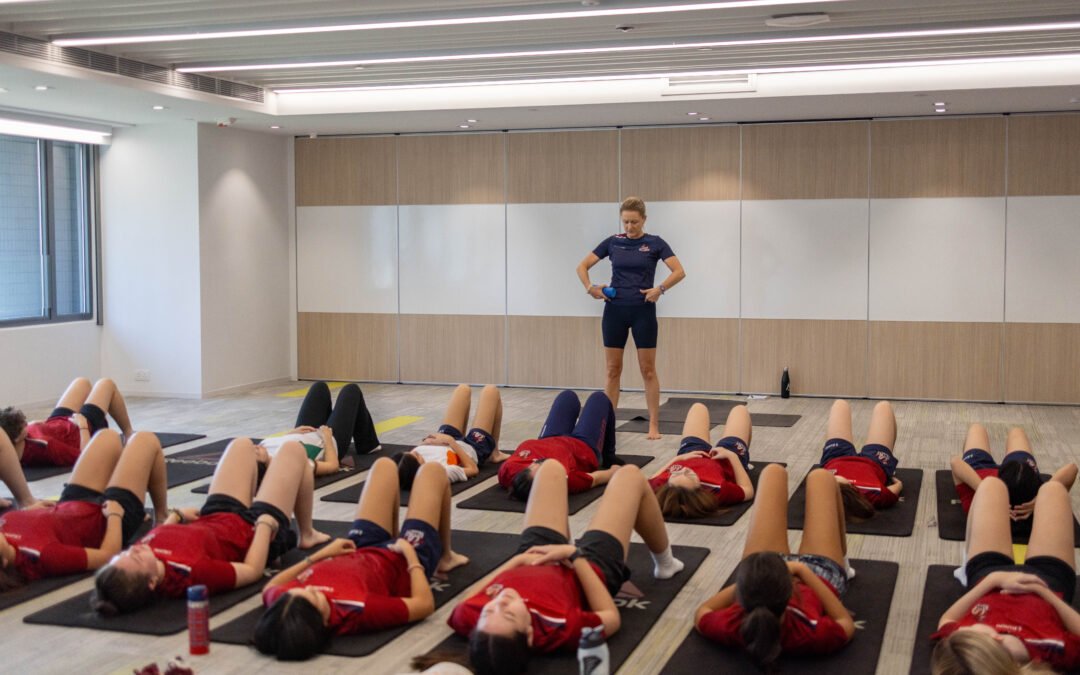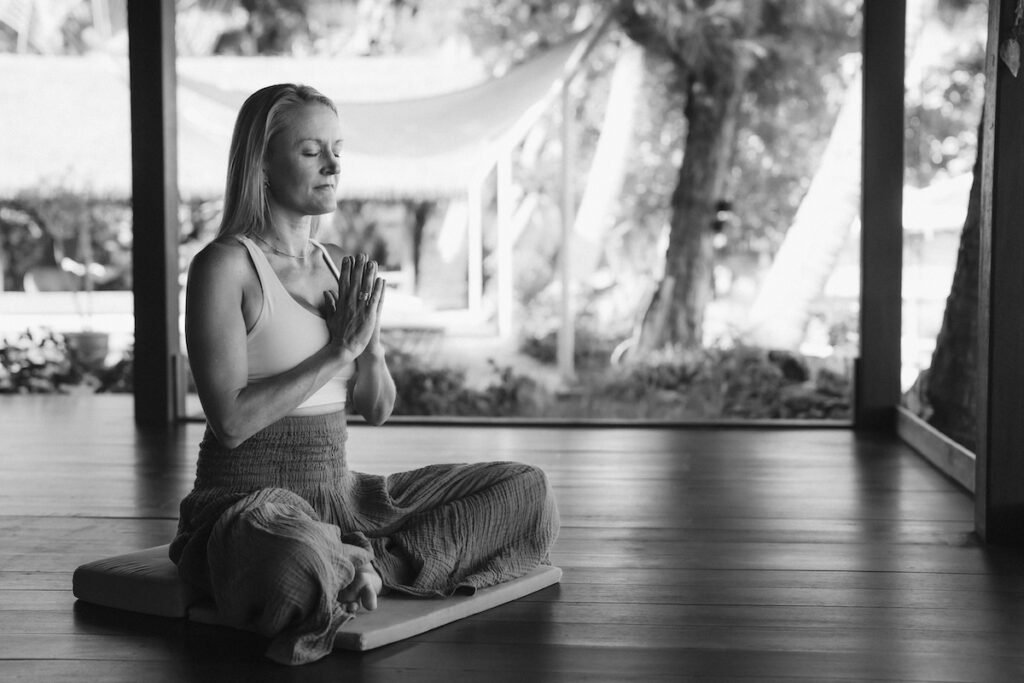In today’s fast-paced world, teenagers face a unique set of challenges that can be overwhelming—academic pressures, social dynamics, and the constant buzz of technology. As they navigate this complex landscape, many are turning to practices like yoga and breathwork, discovering powerful tools for mental and emotional well-being. I have been teaching several groups of teens per week at Kellett International School for 3-years now, also helping many others in a 1:1 setting, and have witnessed first hand the power of these practices in managing the particular wellbeing challenges they face. Let’s explore how these ancient yoga practices can benefit modern teens and how they can easily incorporate them into their daily lives.
The Science Behind the Benefits
Research supports the positive impact of yoga and breathwork on teenagers. A study published in the Journal of Adolescent Health found that regular yoga practice can significantly reduce anxiety and depression in adolescents (Khalsa et al., 2016). Another study highlighted that breathwork techniques can enhance emotional regulation, helping teens manage stress more effectively (Brown & Gerbarg, 2005).
Key Benefits for Teens
- Stress Reduction
- Yoga and breathwork activate the parasympathetic nervous system, promoting relaxation and reducing stress levels. This can be especially beneficial during exam season or when managing social pressures.
- Improved Focus and Concentration
- Mindful breathing and yoga poses enhance concentration and cognitive function. A study in Psychological Science showed that mindfulness practices improve attention span, which can help teens perform better academically (Zeidan et al., 2010).
- Emotional Regulation
- Practicing yoga and breathwork fosters self-awareness and emotional intelligence. Teens learn to recognize their feelings and respond to them in healthier ways, which can lead to better relationships with peers and family.
- Physical Health
- Regular yoga practice promotes flexibility, strength, and overall physical fitness. This can be particularly important for teens, as they often experience rapid physical changes during this stage of life.
- Building Resilience
- Yoga encourages a growth mindset, teaching teens to embrace challenges and setbacks as opportunities for growth.

Effective Practices for Teens
1. Mindful Breathing
- How to Practice: Sit comfortably, close your eyes, and focus on your breath. Inhale deeply through the nose for 4 seconds, hold for 4 seconds, and exhale slowly through the nose for 4 seconds. Repeat for 5-10 minutes.
- Benefits: This simple technique calms the mind and reduces anxiety.
2. Sun Salutations
- How to Practice: This dynamic sequence of poses warms up the body and promotes mindfulness. Start in mountain pose, then flow through poses like forward fold, cobra and downward dog, making sure to link breath with movement.
- Benefits: Enhances physical fitness while grounding the mind.
3. Guided Meditation
- How to Practice: Use apps like Headspace or Calm for guided sessions tailored for teens. These often focus on themes like self-acceptance or stress relief. Or, if you don’t have your device to hand, simply watch your own breath, observing each inhale and exhale as the breath naturally flows.
- Benefits: Apps can provide structure and support, making it easier to maintain a consistent practice. But equally, don’t forget the power of simply sitting to observe the breath for bringing you back to this moment.
4. Gratitude Journaling
- How to Practice: Spend a few minutes each day writing down three things you’re grateful for. Reflect on why these things matter to you. You can also consider those areas where you need to forgive and release, and take a moment to ask for help too!
- Benefits: Cultivates a positive mindset and enhances emotional well-being.
Building a Routine
Incorporating yoga and breathwork into a daily routine doesn’t have to be complicated. Here are some simple tips:
- Start Small: Dedicate just 5-10 minutes each day to practice. Gradually increase the time as it becomes a habit.
- Create a Space: Designate a quiet, comfortable space for practice at home. This signals to the mind that it’s time to relax and focus.
- Use Technology: Leverage apps or online videos that offer guided sessions specifically for teens.
- Buddy Up: Encourage friends to join in. Practicing together can make it more enjoyable and motivate consistent participation.
Conclusion
As teenagers face the myriad challenges of modern life, integrating yoga and breathwork into their routines can provide essential tools for navigating stress and enhancing well-being. With scientific backing highlighting their benefits, these practices are not just trends but valuable resources for building resilience and emotional intelligence.
So, let’s encourage our teens to roll out their mats, take a deep breath, and embark on this journey toward greater health and happiness. Drop me a line to begin the conversation about teenage yoga at your child’s school, or to arrange 1:1 sessions for you or your teenager.
With love,
Rowena x
Click on the image below to access a useful guided, healing meditation which includes many of the meditation techniques enjoyed by my teenage classes at Kellett International School :
References
- Khalsa, S. B. S., et al. (2016). “Yoga in the schools: A systematic review of the evidence for efficacy.” Journal of Adolescent Health.
- Brown, R. P., & Gerbarg, P. L. (2005). “Sudarshan Kriya Yogic breathing in the treatment of stress, anxiety, and depression: Part I—Neurophysiologic model.” Journal of Alternative and Complementary Medicine.
- Zeidan, F., et al. (2010). “Mindfulness meditation improves cognition: Evidence of brief mental training.” Psychological Science.
By embracing these practices, teens can find balance and peace amidst the chaos of their daily lives. These practices not only promote mental health but also empower them to thrive in their ever-evolving journey.




